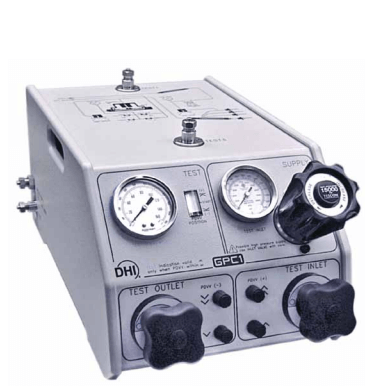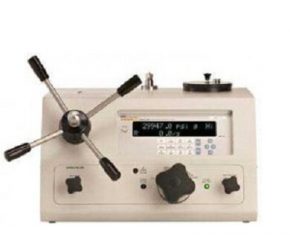Description
A new alternative for setting and precisely adjusting high gas pressures
- GPC1-16000 sets and adjusts high pressure gas up to 110 MPa (16,000 psi), GPC1-10000 sets up to 70 MPa (10,000 psi).
- Operation requires no physical exertion
- Very high resolution pressure control with push button adjustment
- Used with both piston gauge and transfer standard based test and calibration systems
- Self-contained design with compact 30 cm x 54 cm (12 in. x 21 in.) footprint
- Half-turn metering valves cannot be over tightened
- No “end of stroke” variable volume limitations
- High quality, long life construction
- Advanced ergonomics
GPC1-16000 and GPC1-10000 provide an alternative for setting and precisely adjusting high gas pressures in calibration and test systems. This compact and easy to use system provides just the right balance between the simplicity and reliability of manual operation and the convenience of automated features. Push button fine pressure control eliminates the tedious variable volume operation previously associated with high pressure gas operation. GPC1 is the ideal solution in a variety of applications where high pressure generation and precision control is required, including piston gauge and transfer standard based calibration and test systems. GPC1 is the standard pressure setting and adjusting component in a DHI PG7202 piston gauge system.
GPC1 combined with an RPM4 reference pressure monitor creates a complete transfer standard based calibration system that is particularly well suited for calibrating analog gauges by setting the gauge needle on the cardinal point
and reading back the actual pressure. An external pressure supply equal to the maximum desired test pressure, up to up to 70 MPa (10,000 psi) (GPC1-10000) or 110 MPa (16,000 psi) (GPC1-16000), is connected to the GPC1 supply port. DHI gas boosters are available to provide the supply pressure. A built-in regulator and indicating gauge allow the high pressure supply to be adjusted locally to the pressure desired for the test being run. The output of the
supply regulator feeds the high pressure inlet valve. The inlet valve admits pressure for rough ascending pressure control and the high pressure outlet valve decreases pressure. The control valves are specially designed metering valves that operate over a half turn and cannot be overtightened. Fine pressure adjustment is achieved using a piston based variable volume. The variable volume is pneumatically actuated through a pneumatic diaphragm. Push button inlet and exhaust valves adjust the air pressure on the diaphragm providing both effort free micro adjustment and rapid piston movement as needed. The physical efforts and “end of stroke” operational limitations of conventional screw presses are eliminated. The variable volume piston position is indicated on the GPC1 front panel.
The GPC1 test ports are connected to an inclined manifold that serves as a sump to collect liquids or other contaminants that may be returned from the external test system. The sump is fitted with a drain port so that it may be purged at any time. This alllows GPC1 to be used with test devices that have not been perfectly cleaned. A special clean test port is supplied directly from the gas inlet assuring that clean devices under test will not be contaminated by liquids that might be present in the sump.








